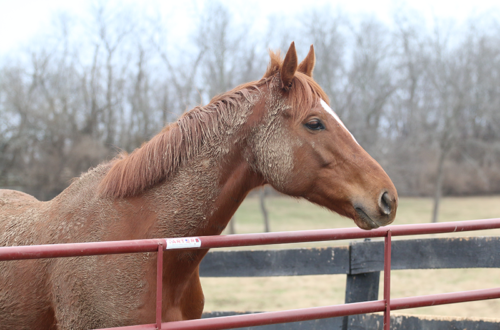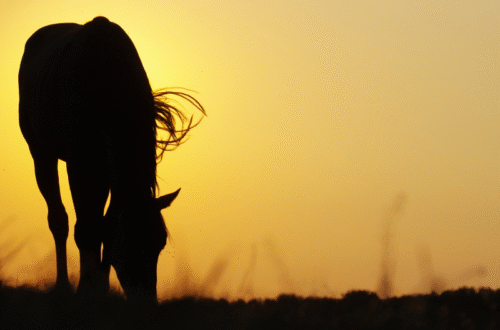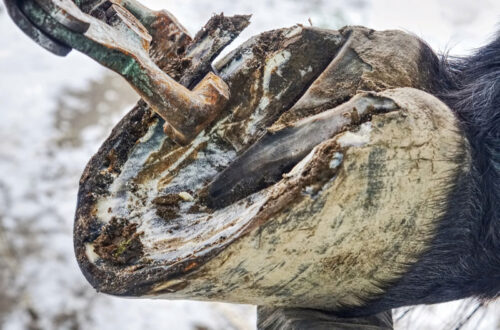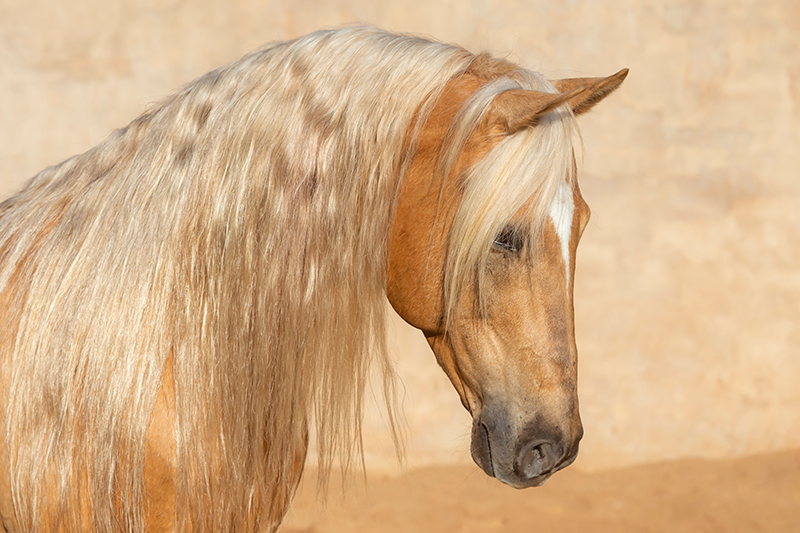
Mane and Tail Care Tips for Your Horse
By Liv Gude, Brought to you by Shapley’s Grooming Products, the Official Grooming Products Sponsor of USPC
It’s well known that a horse’s hair coat is designed for insulation, waterproofing, and to help the horse regulate his temperature. And while the mane and tail certainly make our horses even prettier than they already are, they also serve many purposes. The mane keeps the neck warm and dry, the tail acts as a communication tool, and both the mane and tail protect the horse from biting insects. With such important functions, it’s important to keep the mane and tail as healthy as possible.
Create Healthy Hair
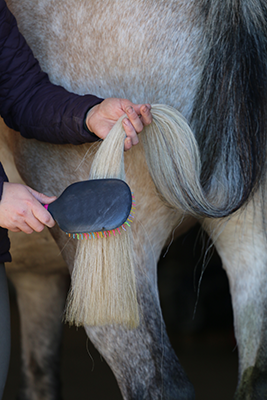
Horses have different types of hair. Tactile hairs, such as whiskers, inner ear hair, and eyebrows, are called vibrissae, and these often-thicker hairs have nerve endings to help your horse feel their environment. Body hair, which sheds twice a year and regrows afterward, is considered temporary hair, while a horse’s mane and tail are considered permanent hair. Feathers and eyelashes are also permanent hair.
Permanent hair has a life cycle. Each hair grows for a determined length of time and then is released from the follicle, a tubelike structure embedded deep in the skin that holds a hair root and strand. After release, a new hair forms in its place. It’s normal for the mane and tail to lose hair when brushed, just like human hair.
Healthy horsehair is strong, soft, stain-resistant, and less prone to breakage. Several factors affect the growth of a healthy coat. Horses need a well-balanced, forage-based diet, including omega fatty acids, vitamins, and minerals. Daily care, grooming, tick prevention, bedding cleanliness, and your horse’s genetics also contribute to how strong and healthy the mane and tail are.
When the hair is dry, brittle, and unhealthy, it breaks, becomes easily stained, and looks dull and frizzy. It’s also more likely to get tangled and pick up burrs.
Daily Mane and Tail Care
When you groom, spend quality time on the mane and tail. Inspect, and feel, the base of the mane for ticks, lice, scabs, lumps, scrapes, and anything that wasn’t there the day before. Concentrate your efforts on the skin first, then pick out debris as needed and brush the mane. Notice if the hair is greasy, sticky, dry, or stained.
On the tail, inspect the skin underneath and at the hair’s base. Like the mane, look and feel for any issues. The tailbone’s underside is soft skin and may have irritations or scrapes. Pick any large pieces of shavings or twigs from the tail and proceed with brushing.
Tools for Mane and Tail Care
Using brushes and wide-tooth combs prevents mane and tail hairs from being pulled out before their time. Start from the bottom of the mane and tail, slowly brushing or combing your way up.
You may also want a detangler to help your brush or comb to glide through the hair. Detangling sprays are handy to spritz the mane or tail. They provide a light covering, slickness, and some shine.
You can use a conditioning grooming oil if the mane and tail are dry and crisp, as they have the same benefits as a sheen spray plus conditioning. Massage a quarter-sized dollop through the mane or tail to detangle.
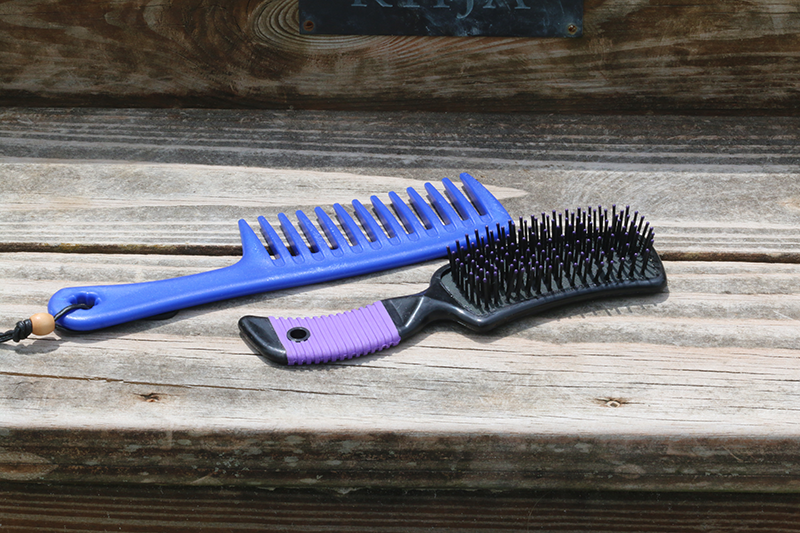
Skin and Hair Healing
If your horse has a skin condition, try using a product formulated for skin health and hair growth. These grooming products can also help with itchy skin and mud fever and stimulate hair growth. Use a small amount on the skin a few times a week, or follow the product directions.
To check for sensitivity, always do a patch test before using any product. It’s simple to dab a dime-sized drop to the skin on the inside of your horse’s upper front leg. After 24 hours, check for a reaction. Occasionally, a horse may develop an irritation that tells you not to use the product on that horse.
Shampoo and Condition
When you shampoo the mane and tail, use products matching your horse’s skin and hair needs. Shampoo should always be mild, and you should avoid detergents and shampoos not intended for horses.
For stained white tails or sun-bleached dark tails, try a color-enhancing shampoo to bring back color. These gentle shampoos boost color while helping stains and lighter bleached areas. Leave them on your horse for five to 10 minutes before rinsing.
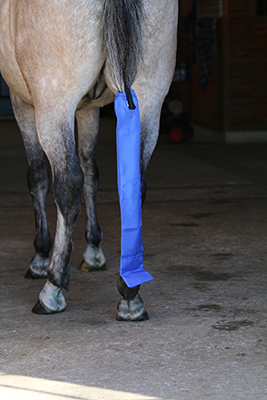
For horses with sensitive or itchy skin, use a medicated shampoo with ingredients that soothe the skin while adding shine.
Use a high-shine shampoo if your horse’s mane and tail need gentle cleaning and a shine boost. Stains lift as conditioning shine is added.
It’s crucial to rinse all products from the skin and hair. Then you can condition.
The most effortless conditioners are grooming oils in light and heavy formulations. When the mane and tail are damp, use your hands to apply grooming oil to the hair. Start with a quarter-sized dollop, and add more if necessary. Then you can start to detangle the hair as the conditioner works. If you use too much, wait a day and shampoo out any excess. It will sink into the hair during that time.
For deep conditioning the tail, use a palmful of oil and work it in. You can braid the hair below the tailbone so the conditioner isn’t as likely to latch on to a lot of dirt, and you can add a tail bag below the tailbone to cover the braid. In a day or two, lightly shampoo any excess oil away.
Tangles and Wind Knots
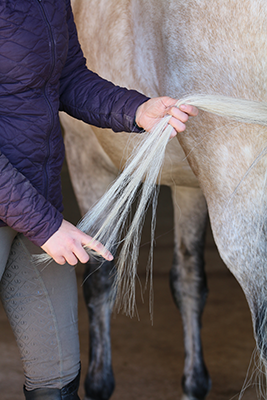
Wind knots and tangles can happen from the wind, swatting flies, and just being outside. A small knot can quickly turn into a large one, several inches wide and long.
When facing many tangles, it’s best to untangle them using grooming oil—lots of it. Your goal is to saturate the area with the grooming oil, but not so much that drips all over. Let it soak in for 10 minutes.
Then, gently pick the knots apart. Start from the bottom, and use your fingers or a wide-toothed comb. Grooming oil creates slippery hair, preventing it from breaking or ripping. If you need, add more.
When the knots are out, you can shampoo excess product away. After the shampoo, add a small amount of grooming oil into the hair for conditioning and to prevent future knots.
Keep the mane and tail clean and conditioned, and groom your horse daily to keep knots to a minimum and to find issues right away. If your horse’s mane and tail are long, consider banging the tail and shortening the mane.
Remember that grooming is horse health care, and daily attention helps you notice the small changes in your horse’s skin and hair.
What to Do About Burrs
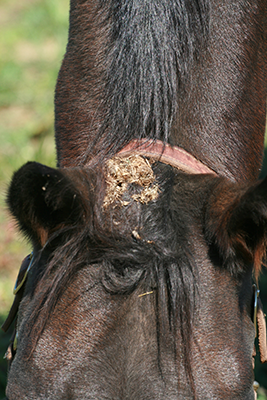
Burrs, stickers, twigs, and even leaves can mess up a horse’s mane, tail, and leg hair. Treat burrs like you would a wind knot—with grooming oil. Saturate the area of burrs with your oil and wait 10 minutes. Then, untangle the burrs closest to the end of the hair and work your way up. Add more oil as needed and shampoo any extra away. Removing plants with burrs from fields is the best way to protect your horse. Tail bags are a good idea when flies and insects are not around. Also, a fly mask can protect the forelock.
Check out all of the Shapley’s Superior Equine Grooming Products at your local tack store or online retailer to help keep your horse’s mane and tail looking great, and visit www.shapleys.com for more expert grooming advice.
This article about mane and tail tips was originally published in the Spring/Summer issue of Discover USPC magazine. Read more content from that issue.
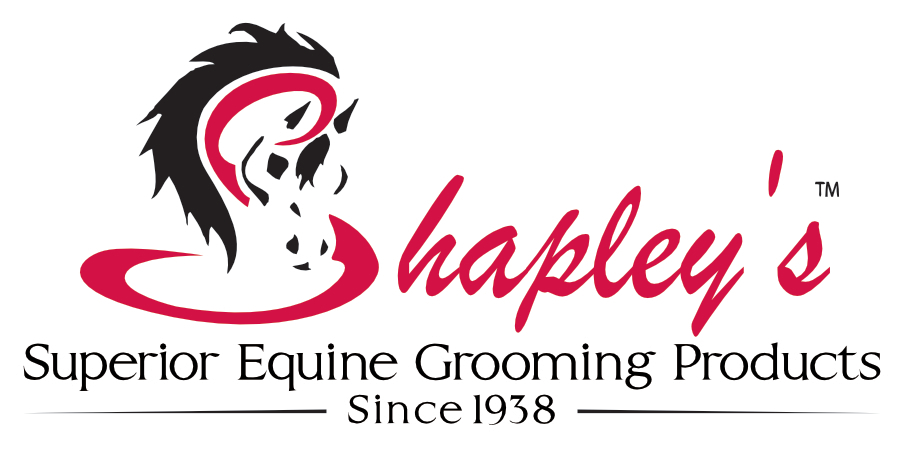
About Shapley’s — Official USPC Grooming Product Sponsor
Shapley’s has been producing superior equine grooming products for over 85 years, and top riders and horsemen trust Shapley’s for their horse’s health and shine. Learn more at Shapleys.com



